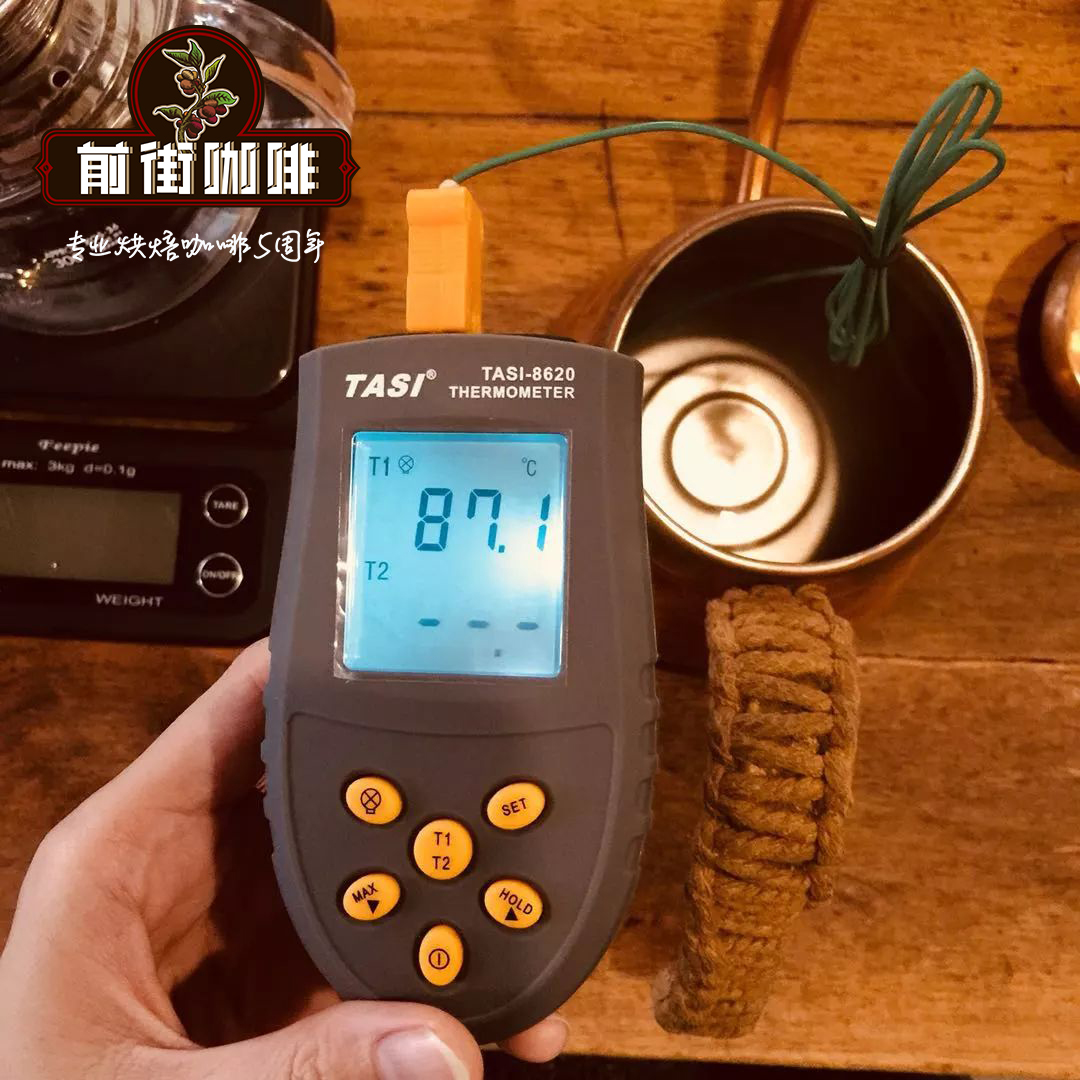Recommendations for baking Sidamo coffee beans in the Yegashefiguji region of Ethiopia

Professional coffee knowledge exchange more coffee bean information please follow the coffee workshop (Wechat official account cafe_style)
Euromia Ethiopian Coffee Sun West Dharma
Producing area: Sidamo producing area in southern Ethiopia
Level: Grade 1
Altitude: 1850-2000 m
Treatment: insolation
Palate: red wine, main flavor of ripe fruit. There are obvious flavors of spices and pepper in the middle and back.
Now the popular light roasted Ethiopian coffee, I do not agree, Ethiopian coffee beans, especially sun beans of the complex full texture, can not be expressed by the shallow roasting before the end of the explosion. It should be at least until City Roast, that is, about the end of the explosion.
As an Ethiopian coffee tanning, he must have expected his wild taste. As expected, he showed rich levels of fruit, charming acidity, and a wide range of baking possibilities. City Roast has the smell of plum wine, with aromas of jasmine and dried fruit spices. And in the case of sun-dried beans, the taste is very clean. The sour taste has lemon aromas, supporting a variety of fruity layers. Melon, rhubarb (sour) strawberry milk and chocolate wine appear in this cup of coffee. Fullcity is full-bodied, with Belgian dark chocolate and raspberry syrup, incredible richness, allowing you to taste fruit beer, cocoa powder, and durian.
Raw bean merchant CoffeeShrub-Sweet Maria's
Ethiopian native species
Level Grade 1
Defect rate. 8 d/300gr, 15-17 Screen production area Guji Zone, Shakiso
Treatment of sun exposure
Arrival date June 2017 Arrival
Guji Zone, Shakiso of origin
Baking advice City to Full City; m, the deeper the taste of chocolate and fruit wine
Organic Certification No
Farm cooperation Yes
Italian coffee Yes
Mormora Farm is located in Ethiopia Ethiopia, Oromia District, Guji Zone Province. The name Guji comes from the people here, which is the geographical and cultural center of the coffee-growing plateau. This is a coffee featuring coconut plus chevy and Sidamo. The coffee grown in southern Ethiopia is generally known as Sidamo, because the former administrative division was called Sidamo District Sidamo. Later, due to the establishment of the coffee graded auction system, it gradually began to use the commercial name of Yirgacheff Coconut Gashev, and the administrative district was also divided into the town of Coconut Gashev in the west and the people's District in the South, Gedeo Province, and Oromia Province in the East. Guji Province is regarded as a newly developed coffee producing area. Just like Yirgacheff was to Sidamo)
Shakiso Mormora Farm, which began in 2012, is a family farm. The planting area is about 250ha, between 2000 and 2300 above sea level. Coffee is planted in a mixture with natural forests, so farmers often plant bananas and other crops where coffee is grown. Here, it is planted directly in the forest, on the one hand, to maintain ecological diversity and avoid damage to the natural environment caused by planting a single coffee species, on the other hand, to maintain the nutrients produced by the natural ecology in the soil. It is an organic way of planting without pesticides and artificial fertilizers. Avoiding a single variety of coffee can also help fight natural disasters and various diseases and insect pests. Ethiopia is a native place with many varieties of coffee. Farmers pick and separate varieties from the forest and continue to grow them in the natural environment. Mormora Farm not only grows its own, but also buys coffee from small farmers in the nearby area.
And guide small farmers in planting techniques and harvesting and handling methods. At present, there is only a sun treatment plant in Guji Highland, and a washing plant will be added in the future.
END
Important Notice :
前街咖啡 FrontStreet Coffee has moved to new addredd:
FrontStreet Coffee Address: 315,Donghua East Road,GuangZhou
Tel:020 38364473
- Prev

Ethiopian Rose Summer Village Manor Brand-CHAKA_ Rose Summer Village Garden what's the taste of Rose Summer?
Professional coffee knowledge exchange more coffee bean information please follow Coffee Workshop (Wechat official account cafe_style) New production season Ethiopian Coffee Rosia Village Manor CHAKA Rosia Village Manor-Sun Origin: Ethiopia / production area: Banchimaji Bench Maji / altitude: 19112001 m / Coffee species: Gori Gesha / Post processing: Nature Day
- Next

Ethiopian washing Cochel-Po ABOL brewing parameters _ hand-cooled extraction of Yega Chevy Coffee
Professional coffee knowledge exchange more coffee bean information please follow the coffee workshop (Wechat official account cafe_style) Ethiopian Coffee-Yegashifi. Abol G1 Today I am going to recommend a kind of coffee that I personally like very much, that is Yega Xuefei. ABOL G1. Yirgacheffe is a small town, 700-21000 meters above sea level, which is Ethiopia's boutique coffee.
Related
- Detailed explanation of Jadeite planting Land in Panamanian Jadeite Manor introduction to the grading system of Jadeite competitive bidding, Red bid, Green bid and Rose Summer
- Story of Coffee planting in Brenka region of Costa Rica Stonehenge Manor anaerobic heavy honey treatment of flavor mouth
- What's on the barrel of Blue Mountain Coffee beans?
- Can American coffee also pull flowers? How to use hot American style to pull out a good-looking pattern?
- Can you make a cold extract with coffee beans? What is the right proportion for cold-extracted coffee formula?
- Indonesian PWN Gold Mandrine Coffee Origin Features Flavor How to Chong? Mandolin coffee is American.
- A brief introduction to the flavor characteristics of Brazilian yellow bourbon coffee beans
- What is the effect of different water quality on the flavor of cold-extracted coffee? What kind of water is best for brewing coffee?
- Why do you think of Rose Summer whenever you mention Panamanian coffee?
- Introduction to the characteristics of authentic blue mountain coffee bean producing areas? What is the CIB Coffee Authority in Jamaica?

